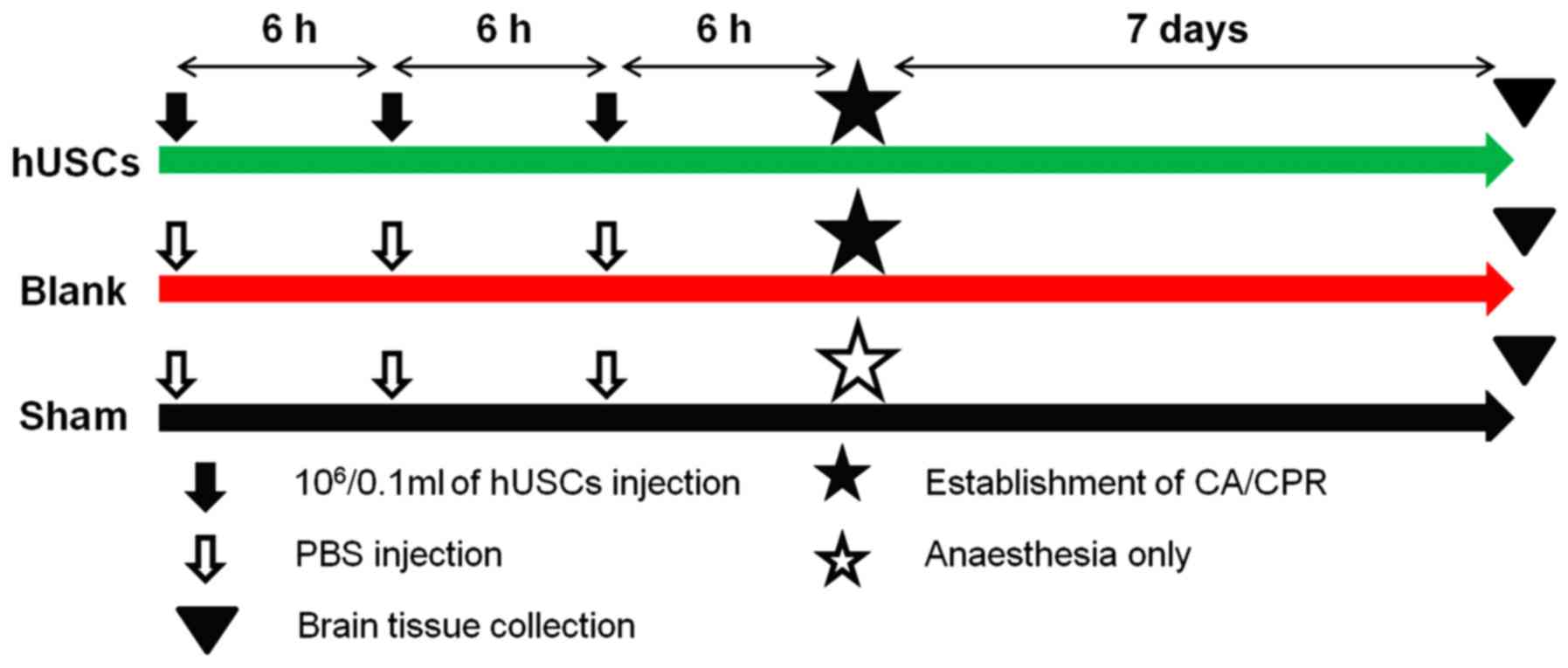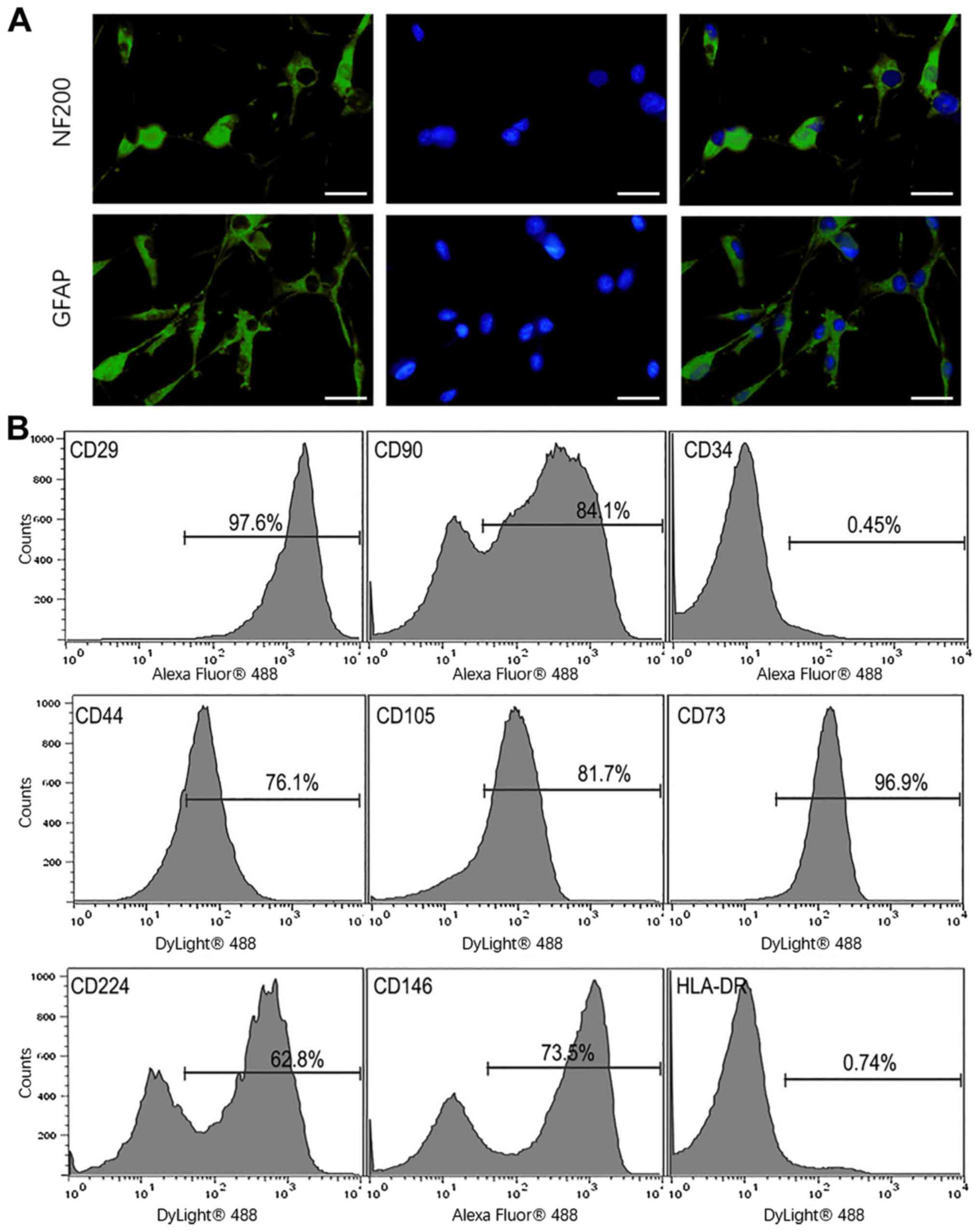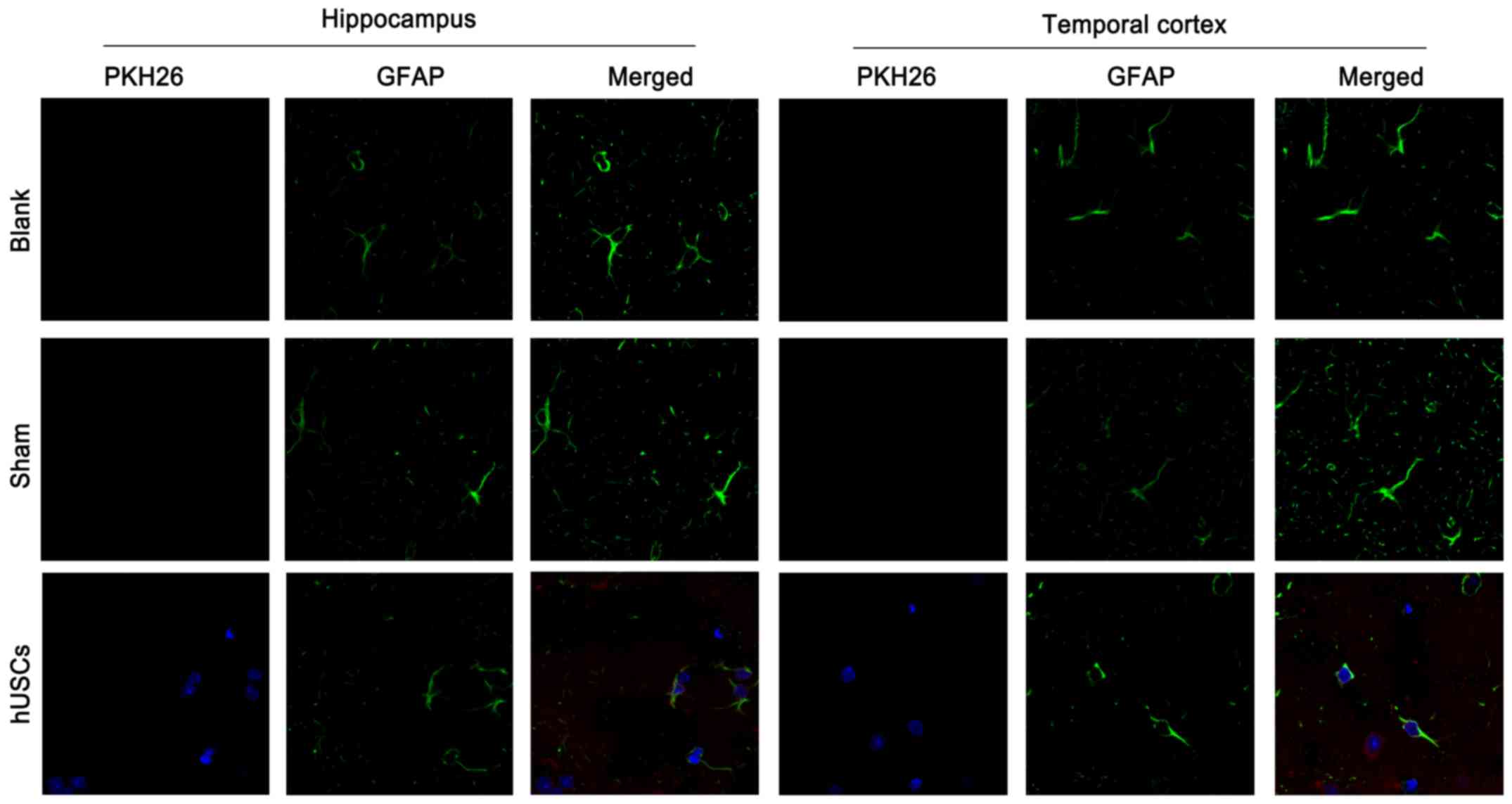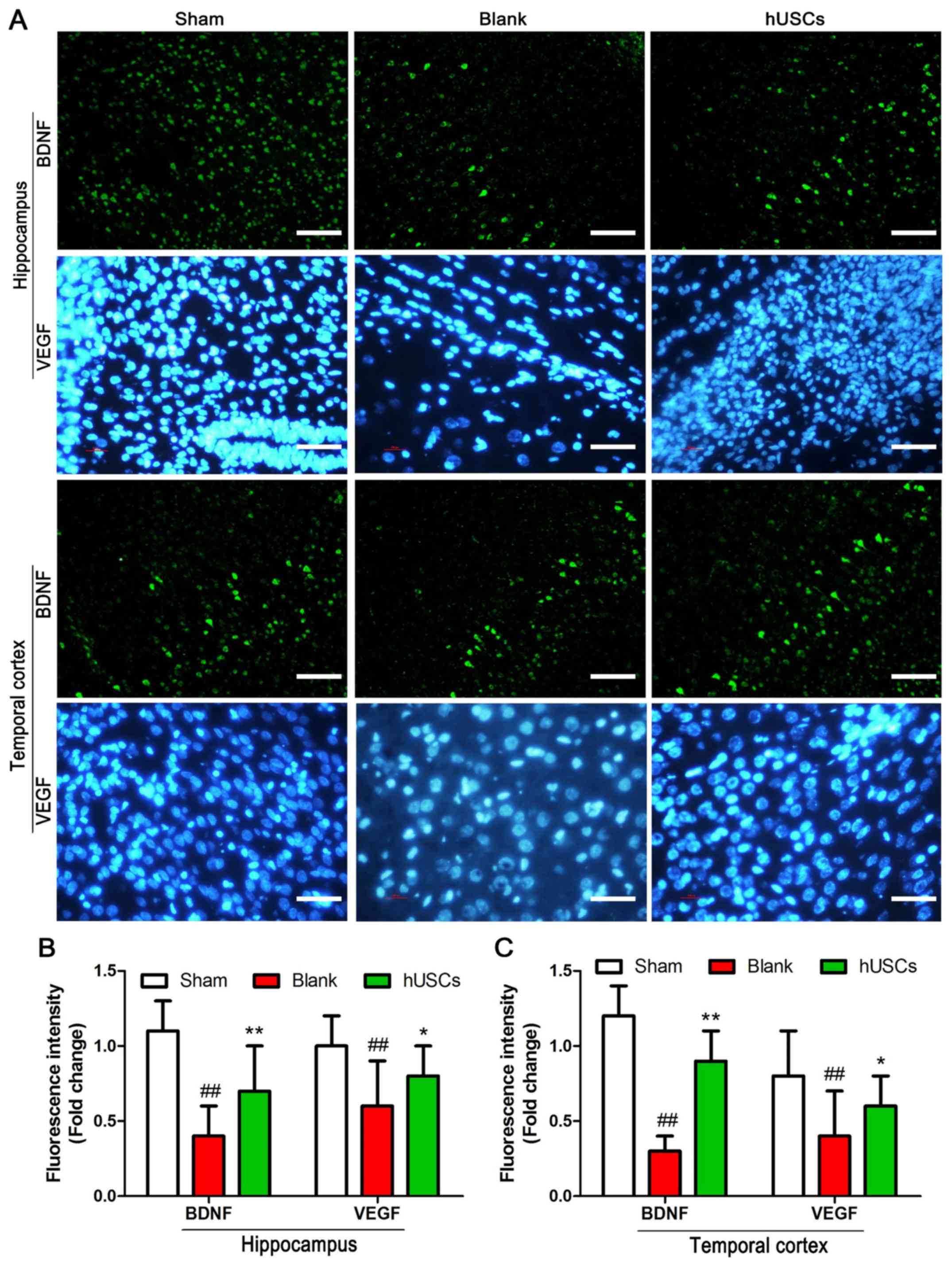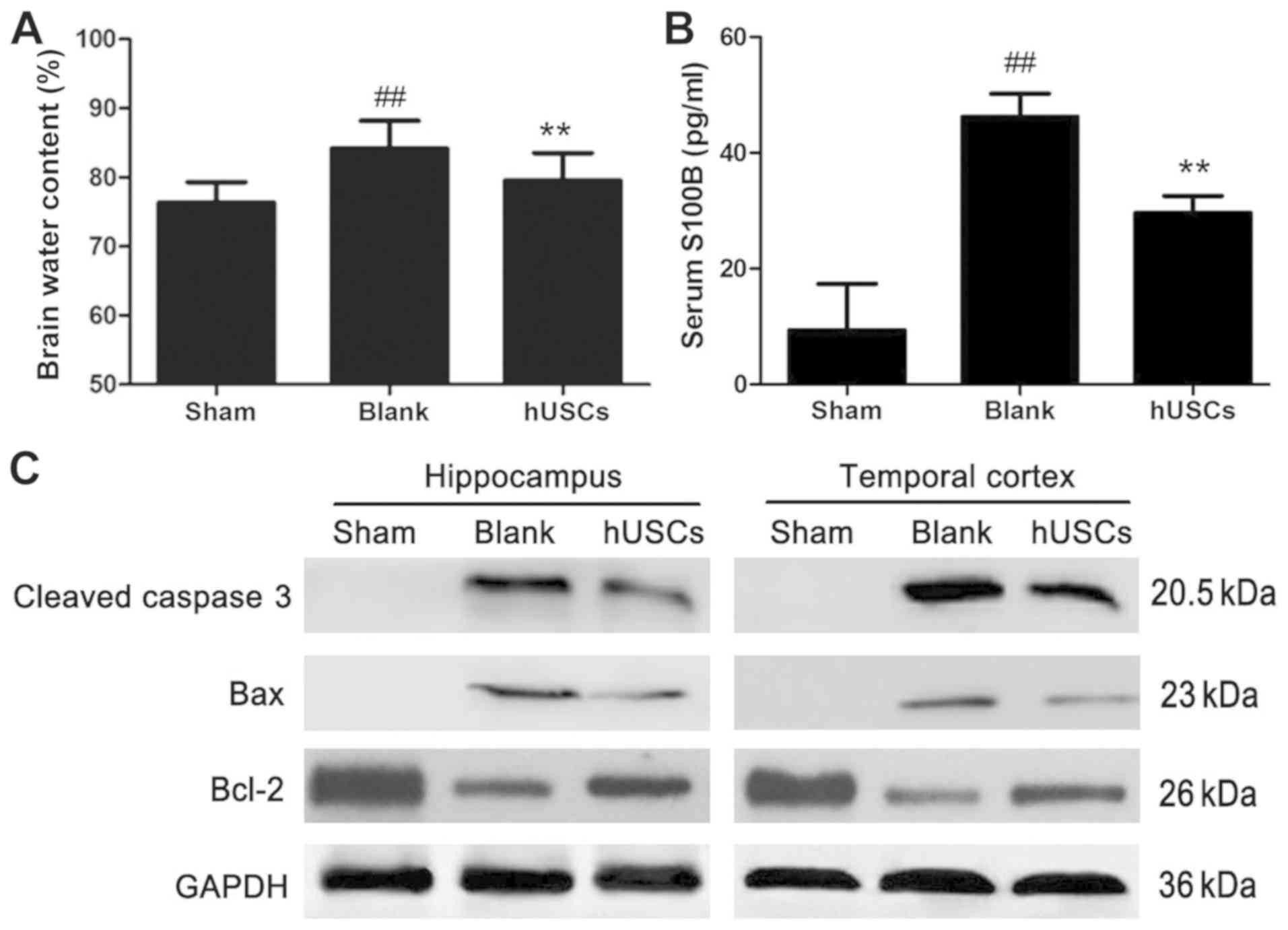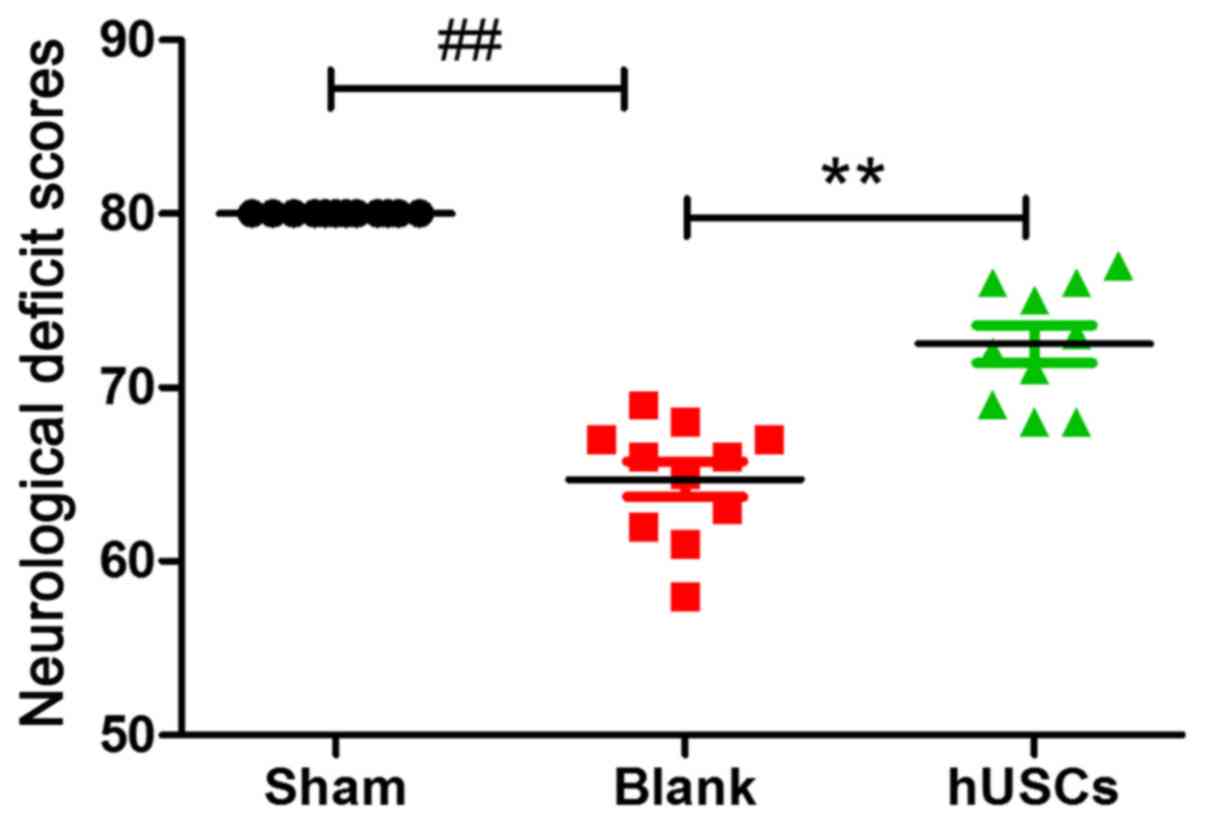|
1
|
Reis C, Akyol O, Araujo C, Huang L,
Enkhjargal B, Malaguit J, Gospodarev V and Zhang JH:
Pathophysiology and the monitoring methods for cardiac arrest
associated brain injury. Int J Mol Sci. 18(129)2017.PubMed/NCBI View Article : Google Scholar
|
|
2
|
Elmer J and Callaway CW: The brain after
cardiac arrest. Semin Neurol. 37:19–24. 2017.PubMed/NCBI View Article : Google Scholar
|
|
3
|
Sekhon MS and Griesdale DE: Individualized
perfusion targets in hypoxic ischemic brain injury after cardiac
arrest. Crit Care. 21(259)2017.PubMed/NCBI View Article : Google Scholar
|
|
4
|
Mulder M and Geocadin RG: Will the promise
of drug-induced therapeutic hypothermia be fulfilled? Crit Care
Med. 42:221–223. 2014.PubMed/NCBI View Article : Google Scholar
|
|
5
|
Liakopoulos OJ, Hristov N, Buckberg GD,
Triana J, Trummer G and Allen BS: Resuscitation after prolonged
cardiac arrest: Effects of cardiopulmonary bypass and
sodium-hydrogen exchange inhibition on myocardial and neurological
recovery. Eur J Cardiothorac Surg. 40:978–984. 2011.PubMed/NCBI View Article : Google Scholar
|
|
6
|
Pasquier M, Hugli O, Paal P, Darocha T,
Blancher M, Husby P, Silfvast T, Carron PN and Rousson V:
Hypothermia outcome prediction after extracorporeal life support
for hypothermic cardiac arrest patients: The HOPE score.
Resuscitation. 126:58–64. 2018.PubMed/NCBI View Article : Google Scholar
|
|
7
|
Metrailler-Mermoud J, Hugli O, Carron PN,
Kottmann A, Frochaux V, Zen-Ruffinen G and Pasquier M: Avalanche
victims in cardiac arrest are unlikely to survive despite adherence
to medical guidelines. Resuscitation. 141:35–43. 2019.PubMed/NCBI View Article : Google Scholar
|
|
8
|
Jentzer JC, Clements CM, Wright RS, White
RD and Jaffe AS: Improving survival from cardiac arrest: A review
of contemporary practice and challenges. Ann Emerg Med. 68:678–689.
2016.PubMed/NCBI View Article : Google Scholar
|
|
9
|
Li M, Song W, Ouyang YH, Wu DH, Zhang J,
Wang LX and Li J: Clinical evaluation of active abdominal lifting
and compression CPR in patients with cardiac arrest. Am J Emerg
Med. 35:1892–1894. 2017.PubMed/NCBI View Article : Google Scholar
|
|
10
|
Singh SK, Kumar R and Koonwar S:
Epidemiology and outcome of pediatric in-hospital cardiopulmonary
resuscitation in Northern India. J Pediatr Intensive Care. 2:55–61.
2013.PubMed/NCBI View Article : Google Scholar
|
|
11
|
Hackenhaar FS, Medeiros TM, Heemann FM,
Behling CS, Putti JS, Mahl CD, Verona C, da Silva AC, Guerra MC,
Gonçalves CA, et al: Therapeutic hypothermia reduces oxidative
damage and alters antioxidant defenses after cardiac arrest. Oxid
Med Cell Longev. 2017(8704352)2017.PubMed/NCBI View Article : Google Scholar
|
|
12
|
Chen L, Li L, Xing F, Peng J, Peng K, Wang
Y and Xiang Z: Human urine-derived stem cells: Potential for
cell-based therapy of cartilage defects. Stem Cells Int.
2018(4686259)2018.PubMed/NCBI View Article : Google Scholar
|
|
13
|
Zhao T, Luo D, Sun Y, Niu X, Wang Y, Wang
C and Jia W: Human urine-derived stem cells play a novel role in
the treatment of STZ-induced diabetic mice. J Mol Histol.
49:419–428. 2018.PubMed/NCBI View Article : Google Scholar
|
|
14
|
Yang H, Chen B, Deng J, Zhuang G, Wu S,
Liu G, Deng C, Yang G, Qiu X, Wei P, et al: Characterization of
rabbit urine-derived stem cells for potential application in lower
urinary tract tissue regeneration. Cell Tissue Res. 374:303–315.
2018.PubMed/NCBI View Article : Google Scholar
|
|
15
|
Li J, Luo H, Dong X, Liu Q, Wu C, Zhang T,
Hu X, Zhang Y, Song B and Li L: Therapeutic effect of urine-derived
stem cells for protamine/lipopolysaccharide-induced interstitial
cystitis in a rat model. Stem Cell Res Ther. 8(107)2017.PubMed/NCBI View Article : Google Scholar
|
|
16
|
Liu G, Wang X, Sun X, Deng C, Atala A and
Zhang Y: The effect of urine-derived stem cells expressing VEGF
loaded in collagen hydrogels on myogenesis and innervation
following after subcutaneous implantation in nude mice.
Biomaterials. 34:8617–8629. 2013.PubMed/NCBI View Article : Google Scholar
|
|
17
|
Chen CY, Rao SS, Ren L, Hu XK, Tan YJ, Hu
Y, Luo J, Liu YW, Yin H, Huang J, et al: Exosomal DMBT1 from human
urine-derived stem cells facilitates diabetic wound repair by
promoting angiogenesis. Theranostics. 8:1607–1623. 2018.PubMed/NCBI View Article : Google Scholar
|
|
18
|
Iwamuro H, Tachibana Y, Ugawa Y, Saito N
and Nambu A: Information processing from the motor cortices to the
subthalamic nucleus and globus pallidus and their somatotopic
organizations revealed electrophysiologically in monkeys. Eur J
Neurosci. 46:2684–2701. 2017.PubMed/NCBI View Article : Google Scholar
|
|
19
|
Hai K, Chen G, Gou X, Jiang H, Gong D,
Cheng Y, Gong C, Li X, Liu Y, Li H, et al: Monoacylglycerol lipase
inactivation by using URB602 mitigates myocardial damage in a rat
model of cardiac arrest. Crit Care Med. 47:e144–e151.
2019.PubMed/NCBI View Article : Google Scholar
|
|
20
|
Huang Y, Gao X, Zhou X, Xie B, Zhang Y,
Zhu J and Zhu S: Mitophagy in the hippocampus is excessive
activated after cardiac arrest and cardiopulmonary resuscitation.
Neurochem Res. 45:322–330. 2020.PubMed/NCBI View Article : Google Scholar
|
|
21
|
Yang L, Wang J, Deng Y, Gong C, Li Q, Chen
Q, Li H, Jiang C, Zhou R, Hai K, et al: Melatonin improves
neurological outcomes and preserves hippocampal mitochondrial
function in a rat model of cardiac arrest. PLoS One.
13(e0207098)2018.PubMed/NCBI View Article : Google Scholar
|
|
22
|
Sun X, Zheng W, Qian C, Wu Q, Hao Y and Lu
G: Focal adhesion kinase promotes BMP2-induced osteogenic
differentiation of human urinary stem cells via AMPK and Wnt
signaling pathways. J Cell Physiol. 235:4954–4964. 2020.PubMed/NCBI View Article : Google Scholar
|
|
23
|
Chen Q, Xia R, Zheng W, Zhang L, Li P, Sun
X and Shi J: Metronomic paclitaxel improves the efficacy of PD-1
monoclonal antibodies in breast cancer by transforming the tumor
immune microenvironment. Am J Transl Res. 12:519–530.
2020.PubMed/NCBI
|
|
24
|
Gong B, Dong Y, He C, Jiang W, Shan Y,
Zhou BY and Li W: Intravenous transplants of human adipose-derived
stem cell protect the rat brain from ischemia-induced damage. J
Stroke Cerebrovasc Dis. 28:595–603. 2019.PubMed/NCBI View Article : Google Scholar
|
|
25
|
Mills RJ, Titmarsh DM, Koenig X, Parker
BL, Ryall JG, Quaife-Ryan GA, Voges HK, Hodson MP, Ferguson C,
Drowley L, et al: Functional screening in human cardiac organoids
reveals a metabolic mechanism for cardiomyocyte cell cycle arrest.
Proc Natl Acad Sci USA. 114:E8372–E8381. 2017.PubMed/NCBI View Article : Google Scholar
|
|
26
|
Bao Z, Han Z, Zhang B, Yu Y, Xu Z, Ma W,
Ding F, Zhang L, Yu M, Liu S, et al: Arsenic trioxide blocked
proliferation and cardiomyocyte differentiation of human induced
pluripotent stem cells: Implication in cardiac developmental
toxicity. Toxicol Lett. 309:51–58. 2019.PubMed/NCBI View Article : Google Scholar
|
|
27
|
Darkazalli A, Vied C, Badger CD and
Levenson CW: Human mesenchymal stem cell treatment normalizes
cortical gene expression after traumatic brain injury. J
Neurotrauma. 34:204–212. 2017.PubMed/NCBI View Article : Google Scholar
|
|
28
|
Ahn JH, Chen BH, Park JH, Shin BN, Lee TK,
Cho JH, Lee JC, Park JR, Yang SR, Ryoo S, et al: Early IV-injected
human dermis-derived mesenchymal stem cells after transient global
cerebral ischemia do not pass through damaged blood-brain barrier.
J Tissue Eng Regen Med. 12:1646–1657. 2018.PubMed/NCBI View Article : Google Scholar
|
|
29
|
Satija NK, Singh VK, Verma YK, Gupta P,
Sharma S, Afrin F, Sharma M, Sharma P, Tripathi RP and Gurudutta
GU: Mesenchymal stem cell-based therapy: A new paradigm in
regenerative medicine. J Cell Mol Med. 13:4385–4402.
2009.PubMed/NCBI View Article : Google Scholar
|
|
30
|
Ko HR, Ahn SY, Chang YS, Hwang I, Yun T,
Sung DK, Sung SI, Park WS and Ahn JY: Human UCB-MSCs treatment upon
intraventricular hemorrhage contributes to attenuate hippocampal
neuron loss and circuit damage through BDNF-CREB signaling. Stem
Cell Res Ther. 9(326)2018.PubMed/NCBI View Article : Google Scholar
|
|
31
|
Hawkins KE, Corcelli M, Dowding K, Ranzoni
AM, Vlahova F, Hau KL, Hunjan A, Peebles D, Gressens P, Hagberg H,
et al: Embryonic stem cell-derived mesenchymal stem cells (MSCs)
have a superior neuroprotective capacity over fetal MSCs in the
hypoxic-ischemic mouse brain. Stem Cells Transl Med. 7:439–449.
2018.PubMed/NCBI View Article : Google Scholar
|
|
32
|
Zhang SZ, Ma LX, Qian WJ, Li HF, Wang ZF,
Wang HX and Wu ZY: Modeling neurological disease by rapid
conversion of human urine cells into functional neurons. Stem Cells
Int. 2016(2452985)2016.PubMed/NCBI View Article : Google Scholar
|
|
33
|
Guan JJ, Niu X, Gong FX, Hu B, Guo SC, Lou
YL, Zhang CQ, Deng ZF and Wang Y: Biological characteristics of
human-urine-derived stem cells: Potential for cell-based therapy in
neurology. Tissue Eng Part A. 20:1794–1806. 2014.PubMed/NCBI View Article : Google Scholar
|
|
34
|
Shokoohi M, Olad Saheb Madarek E, Khaki A,
Shoorei H, Khaki AA, Soltani M and Ainehchi N: Investigating the
effects of onion juice on male fertility factors and pregnancy rate
after testicular torsion/detorsion by intrauterine insemination
method. Int J Women's Health Reprod Sci. 6:499–505. 2018.
|
|
35
|
Ameli M, Hashemi MS, Moghimian M and
Shokoohi M: Protective effect of tadalafil and verapamil on
testicular function and oxidative stress after torsion/detorsion in
adult male rat. Andrologia. 50(e13068)2018.PubMed/NCBI View Article : Google Scholar
|
|
36
|
Li G, Xie B, He L, Zhou T, Gao G, Liu S,
Pan G, Ge J, Peng F and Zhong X: Generation of retinal organoids
with mature rods and cones from urine-derived human induced
pluripotent stem cells. Stem Cells Int.
2018(4968658)2018.PubMed/NCBI View Article : Google Scholar
|
|
37
|
Yi H, Xie B, Liu B, Wang X, Xu L, Liu J,
Li M, Zhong X and Peng F: Derivation and identification of motor
neurons from human urine-derived induced pluripotent stem cells.
Stem Cells Int. 2018(3628578)2018.PubMed/NCBI View Article : Google Scholar
|
|
38
|
Wahul AB, Joshi PC, Kumar A and
Chakravarty S: Transient global cerebral ischemia differentially
affects cortex, striatum and hippocampus in bilateral common
carotid arterial occlusion (BCCAo) mouse model. J Chem Neuroanat.
92:1–15. 2018.PubMed/NCBI View Article : Google Scholar
|
|
39
|
Hu J, Yu Q, Xie L and Zhu H: Targeting the
blood-spinal cord barrier: A therapeutic approach to spinal cord
protection against ischemia-reperfusion injury. Life Sci. 158:1–6.
2016.PubMed/NCBI View Article : Google Scholar
|
|
40
|
Garbuzova-Davis S, Haller E, Tajiri N,
Thomson A, Barretta J, Williams SN, Haim ED, Qin H, Frisina-Deyo A,
Abraham JV, et al: Blood-spinal cord barrier alterations in
subacute and chronic stages of a rat model of focal cerebral
ischemia. J Neuropathol Exp Neurol. 75:673–688. 2016.PubMed/NCBI View Article : Google Scholar
|
|
41
|
Lee JY, Lee HE, Kang SR, Choi HY, Ryu JH
and Yune TY: Fluoxetine inhibits transient global ischemia-induced
hippocampal neuronal death and memory impairment by preventing
blood-brain barrier disruption. Neuropharmacology. 79:161–171.
2014.PubMed/NCBI View Article : Google Scholar
|















